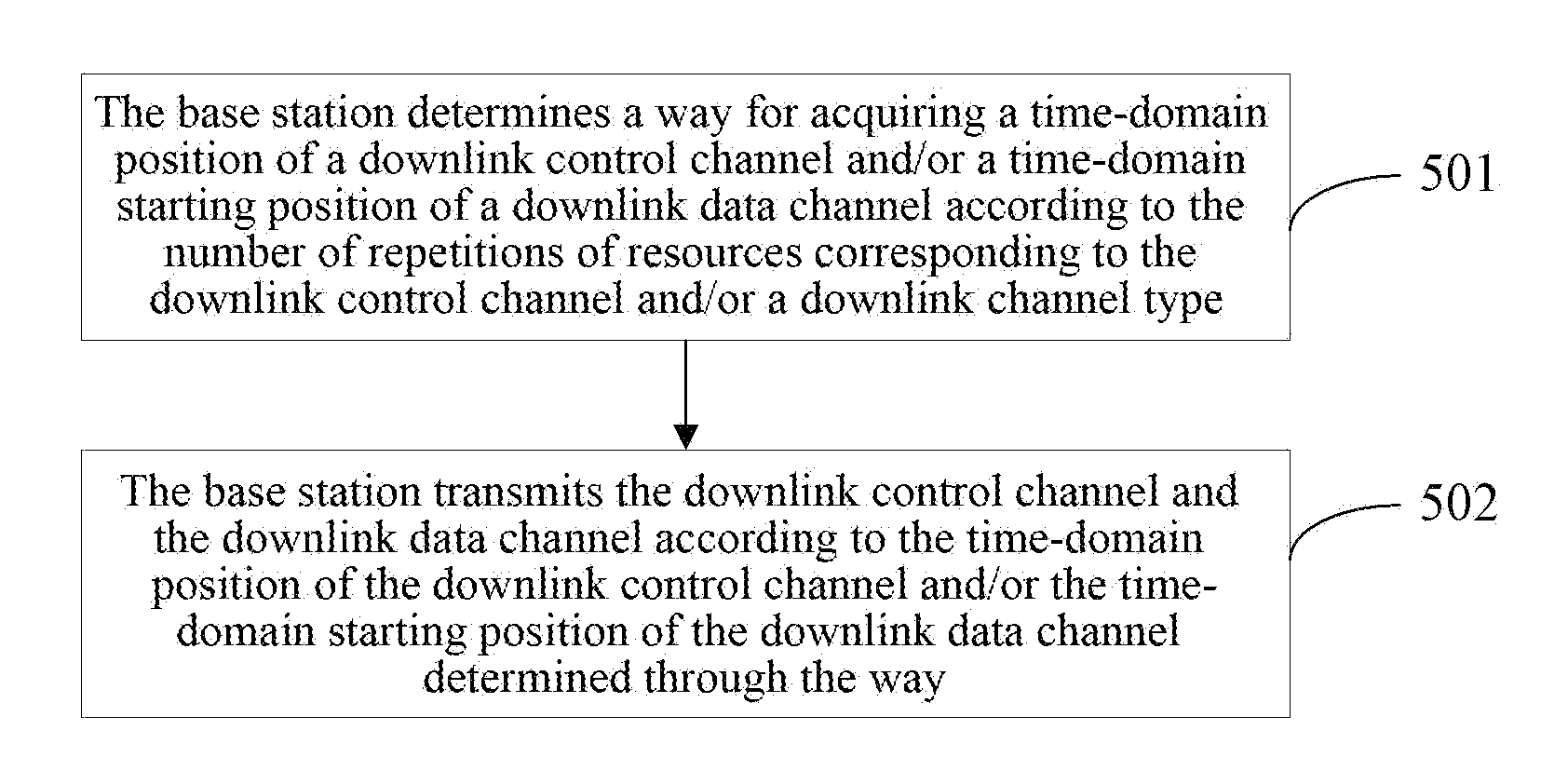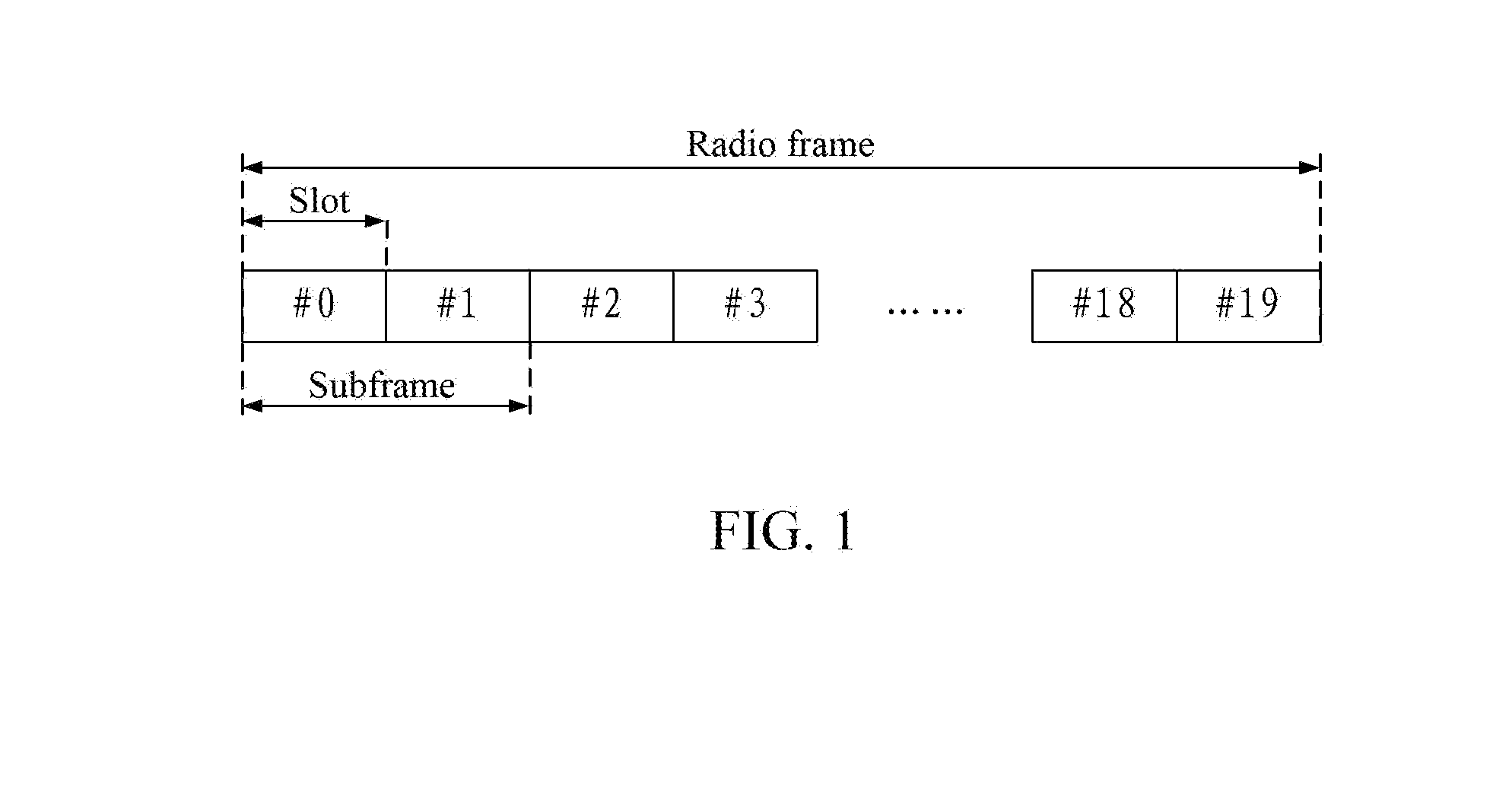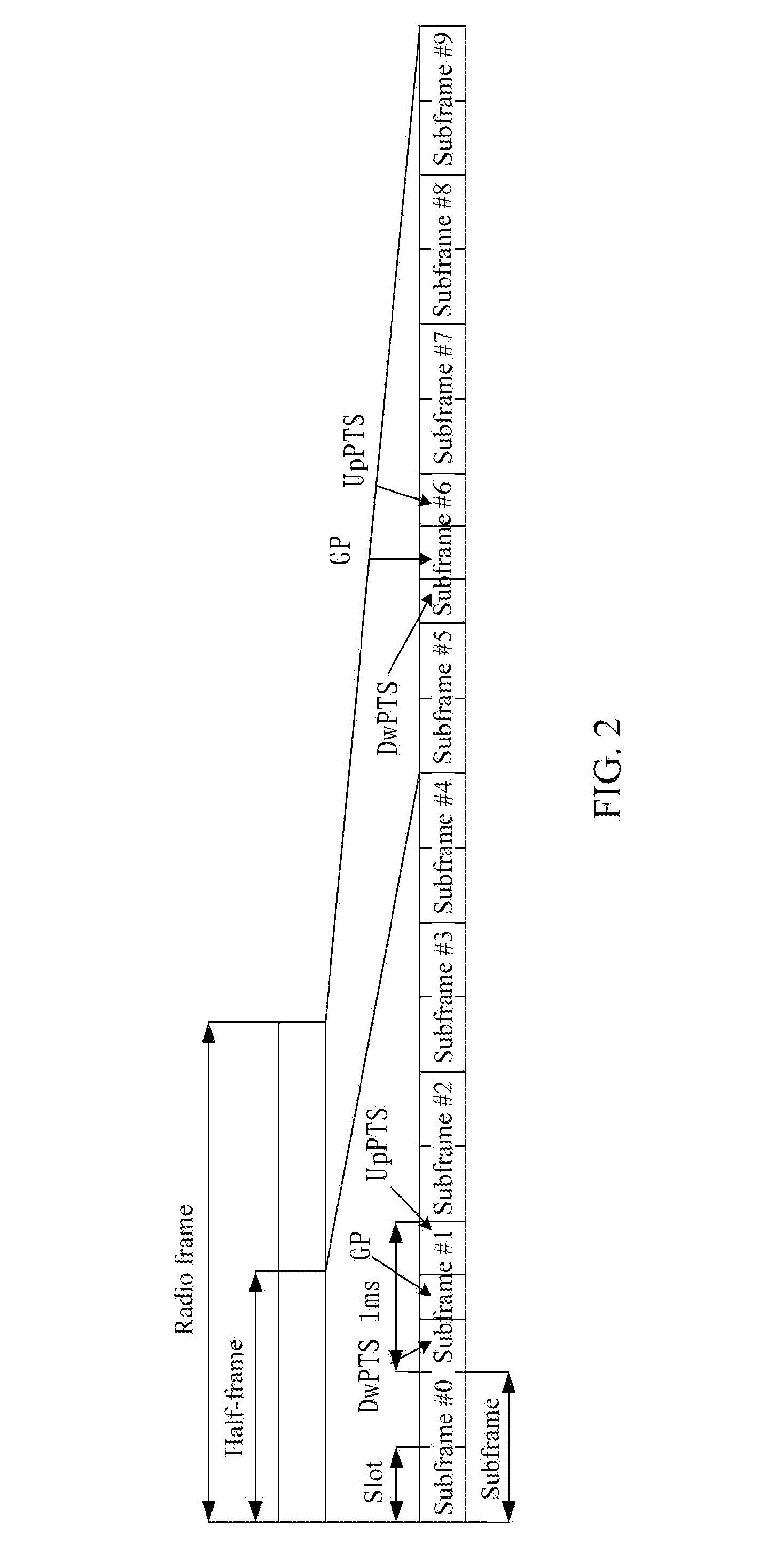Downlink Channel Time Domain Position Determination Method and Device
a time domain and position determination technology, applied in the field ofwireless communications, can solve the problems of increasing the deployment cost of carriers, significant increase in the complexity of blindly detecting pdcch (epdcch), and no effective solution has been put forward
- Summary
- Abstract
- Description
- Claims
- Application Information
AI Technical Summary
Benefits of technology
Problems solved by technology
Method used
Image
Examples
embodiment 1
[0105]First, in conjunction with the accompanying drawings, the present invention will be described.
[0106]The embodiment of the present invention provides a downlink channel time-domain position determination method. First, at the network side, the base station is taken as an example to describe the flow of determining a time-domain position of a downlink channel. As shown in FIG. 5, the following steps are included:
[0107]in step 501, the base station determines a way for acquiring a time-domain position of a downlink control channel and / or a time-domain starting position of a downlink data channel according to the number of repetitions of resources corresponding to the downlink control channel and / or the downlink channel type;
[0108]the present step may include:
[0109]when the number of repetitions is 1, the base station determining the time-domain position of the downlink control channel and / or the time-domain starting position of the downlink data channel according to the PCFICH;
[0...
embodiment 2
[0150]In the following, in conjunction with the accompanying drawings, the present invention will be described.
[0151]The embodiment of the present invention provides a downlink channel time-domain position determination method, and in the following, the flow of using this method to determine the time-domain position of the downlink control channel or the time-domain starting position of the data channel through the signaling indication in the Frequency Division Duplexing (FDD) system will be described. The signaling indication in the embodiment of the present invention is borne in the MIB.
[0152]That is, the control and data of the same terminal are transmitted in the same subframe, that is, the common intra-frame scheduling. Moreover, the number of symbols occupied by the control channels in a plurality of subframes where the control information is repeated is the same. For example, the subframe structures of the downlink subframe control and data channels are as shown in FIG. 7, th...
embodiment 3
[0160]In the following, in conjunction with the accompanying drawings, the present invention will be described.
[0161]The embodiment of the present invention provides a downlink channel time-domain position determination method, still the way for determining the time-domain positions of the downlink control channel and the downlink data channel by means of signaling will be described, and the signaling is borne in the SIB of the blindly-detected public messages to be transmitted. Meanwhile, the downlink control channel and the downlink data channel of the same terminal are still transmitted in the same subframe, and the information of the downlink control channel only contains the user-specific control information.
[0162]At this point, transmission information of some public messages such as the SIB, paging and RAR does not require the PDCCH signaling to indicate the frequency domain position of the subframe, but it is directly transmitted to the user equipment through the PDSCH.
[0163...
PUM
 Login to View More
Login to View More Abstract
Description
Claims
Application Information
 Login to View More
Login to View More - R&D
- Intellectual Property
- Life Sciences
- Materials
- Tech Scout
- Unparalleled Data Quality
- Higher Quality Content
- 60% Fewer Hallucinations
Browse by: Latest US Patents, China's latest patents, Technical Efficacy Thesaurus, Application Domain, Technology Topic, Popular Technical Reports.
© 2025 PatSnap. All rights reserved.Legal|Privacy policy|Modern Slavery Act Transparency Statement|Sitemap|About US| Contact US: help@patsnap.com



